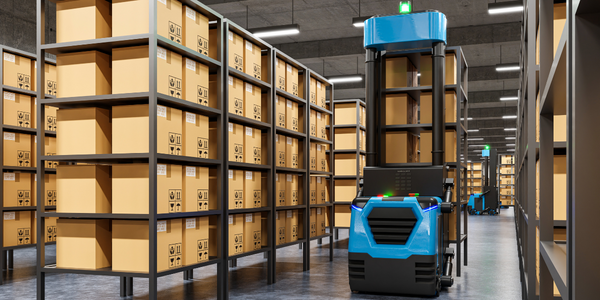Applicable Functions
- Human Resources
- Procurement
Use Cases
- Leasing Finance Automation
- Material Handling Automation
About The Customer
Turas Group is a staffing agency that works with franchisees of the top 50 restaurant brands, including more than 20 Chick-fil-A franchisee locations. The agency helps these franchisees source, recruit, and hire staff for each of their locations. In August 2018, Turas Group sought to improve their internal hiring process to efficiently and quickly staff all the Chick-fil-A locations they serve. Their main challenge was managing and communicating with a high volume of candidates across all locations, a task that was proving to be inefficient and time-consuming due to the lack of a centralized system.
The Challenge
Turas Group, a staffing agency serving franchisees of top 50 restaurant brands, was struggling with managing and communicating with a high volume of candidates across its 20 Chick-fil-A locations. The agency was dealing with the challenge of logging into each franchisee's individual Applicant Tracking System (ATS), extracting applicant information, and manually following up with each candidate. This lack of a centralized system resulted in a slow, inefficient process with no clear visibility. The agency was taking up to 2 weeks to respond to qualified candidates, a time-to-hire that was not ideal for their clients - small franchisees who couldn't afford to have a partially-staffed team.
The Solution
Turas Group partnered with Fountain to implement their hiring software, aiming to automate key recruiting processes. Within two weeks, Turas Group was able to connect each franchisee's ATS to Fountain's software, pulling all applicant data into a single, seamless dashboard. This allowed them to send automated SMS messages to all qualified applicants, ensuring immediate engagement without any manual intervention. With this automation, Turas Group now had a single place to view candidate information for all the Chick-Fil-A locations they served, streamlining their process and increasing efficiency.
Operational Impact
Quantitative Benefit

Case Study missing?
Start adding your own!
Register with your work email and create a new case study profile for your business.
Related Case Studies.

Case Study
Metal Fabrication
As each mast section needs a total of 222 reliable welds, manufacturing them is an extremely labor intensive process.Until recently, STROS had to use highly skilled welders to make these sections. Although it has been using robots for 25 years, these machines could not manage the complex arc welds in narrow spaces needed for these particular components. Consequently, in order to produce a satisfactory number of mast sections it had to employ three welders per shift at three separate workstations to make these pieces. Apart from the obvious outlay this required in terms of manpower and space, STROS found it increasingly difficult to recruit the highly qualified welders needed for this work. That's why in 2007 the company decided to hold a tender for the complete robotization of its manufacturing process for mast sections. Of the four firms who participated, only the ABB group could fulfill all its requirements.

Case Study
Digital Transformation in Insurance: A Case Study of Menora Mivtachim
Menora Mivtachim, one of Israel's largest pension fund and insurance carriers, was facing a significant challenge due to demographic trends in Israel. The growing rate of retirement planning and services was putting unprecedented pressure on the already strained insurance sector. The pension claims process was bottlenecked with complexities, bureaucracy, and errors. Menora Mivtachim's existing pension process was heavily manual and spreadsheet-based, requiring a team of 10 full-time employees to manage. The process involved gathering applicant information, conducting personal surveys, compiling bank information, and finalizing agreements. To leverage the growing opportunity in the retirement sector and position themselves as innovative insurtech leaders, Menora Mivtachim needed to digitalize their process, streamline the claims experience, and reduce quote times through automated processes.

Case Study
ANZ Bank's Digital Transformation with Nintex Advanced Workflow
ANZ Bank, one of the top 50 banks in the world and the fastest-growing bank in Indonesia, was facing a challenge with its rapidly increasing transaction volume. The bank's existing business processes and workflow were becoming overwhelmed. Like most banks in Indonesia, ANZ was manually handling document submission and verification. Customers filled out paper loan applications and supporting documents, then delivered them to bank branches by mail or courier. Branch officers traveled to the bank’s headquarters or used postal mail, email, and phone calls to submit loan documents for verification. Lost or inaccurate documents created more emails and phone calls. Additionally, ANZ had to adhere to strict verification and financial regulations, including the Foreign Accounts Compliance Act. This act requires that all banks outside the United States provide key information about U.S. clients, including citizenship validation, to the Internal Revenue Service–a complex yet crucial process.

Case Study
Automation in Mining: Unleashing Productivity and Efficiency with 5G
The mining industry, a significant contributor to global economic activity with revenues exceeding USD 500 billion, is facing a challenge of improving efficiency and profitability. The industry is gradually shifting its focus towards automation as the next area of opportunity. Boliden, one of the world's most successful mining companies, operates the Aitik mine, the largest open pit in Europe. The Aitik mine is expanding, and with the increase in production from 36 million metric tons of ore to 45 million metric tons, the amount of rock removed will also increase significantly. However, increasing the number of machines required for rock removal in a busy mine is not a straightforward task. Additionally, every blast creates toxic gases that need to dissipate before humans can enter the area and begin excavation. The challenge lies in improving efficiency, managing the increased production, and ensuring safety in the harsh mining environment.

Case Study
Conveyor Belt Monitoring
In a smart environment of management, control and industrial automation, one of the key elements to anticipate failures and increase productivity is to be able to monitor the status and use of conveyor belts of any kind of sector, whether it is for logistics or manufacturing.








